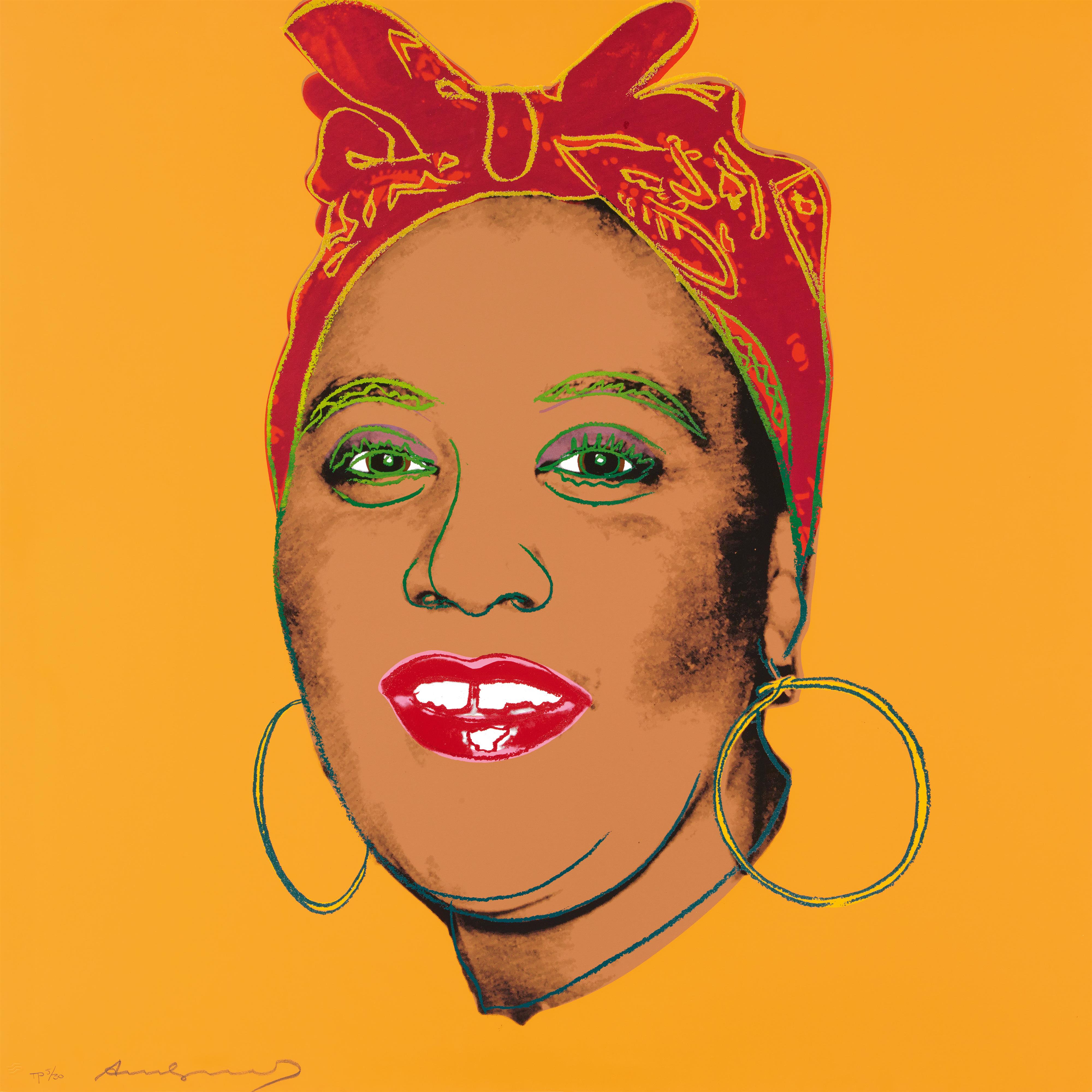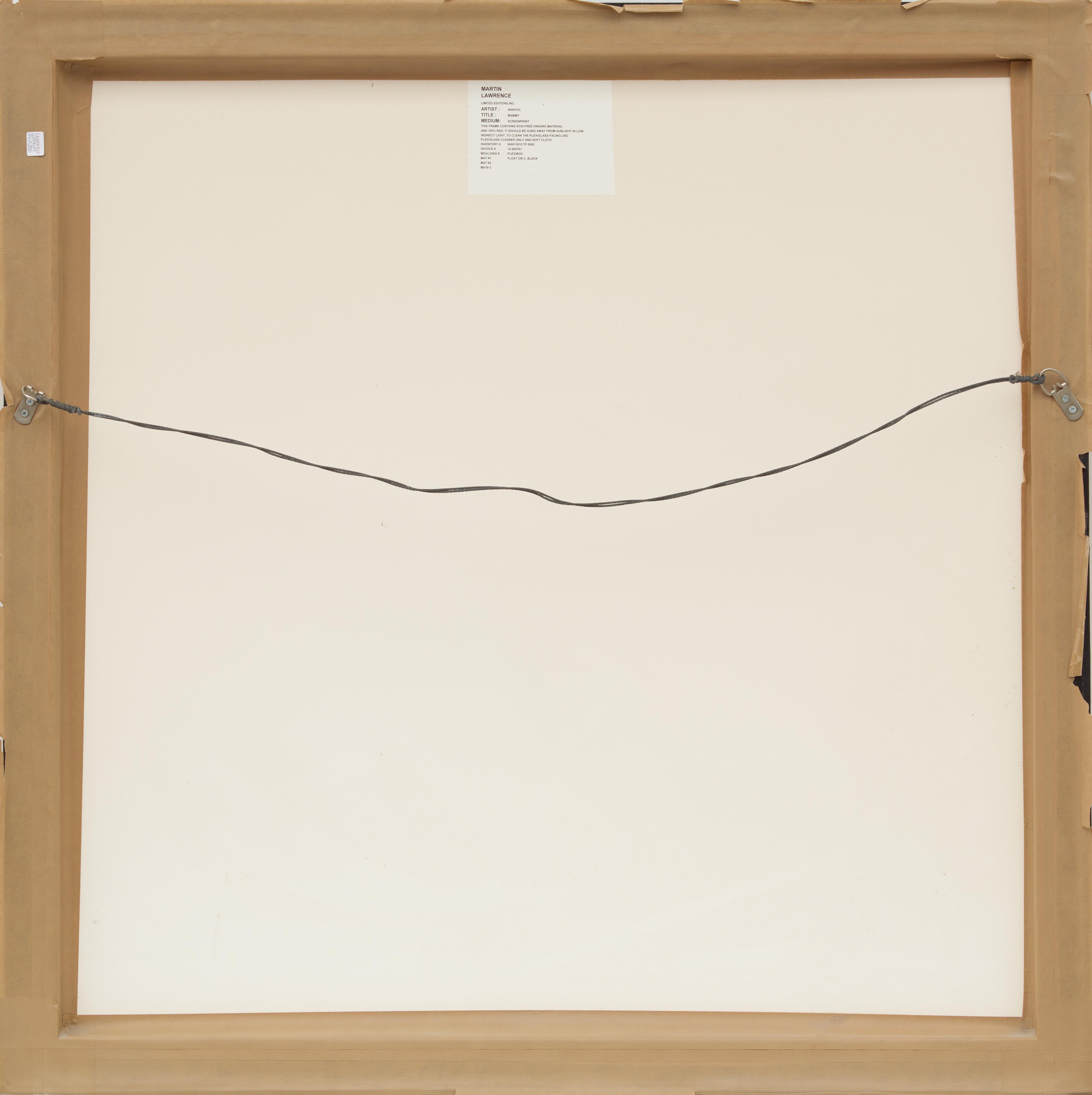Andy Warhol
Mammy
1981
Colour screenprint with diamond dust on Lenox Museum Board. 96.5 x 96.5 cm. Framed under plexiglass. Signed and numbered. Proof TP 5/30 (+200, +30 A.P., +5 P.P., +5 E.P., +4 H.C.). Unique proof from a series of 30 differing colour variations. Edition Ronald Feldman Fine Arts, New York. From the ten part series: Myths. - The sheet mounted firmly to the backing.
In 1979, Andy Warhol commenced the commission work for his gallerist Ron Feldman with the series “Myths” which was published as a ten-piece portfolio in 1981. His theme was modern American myths – popular illustrations which were an integral part of everyday life in the USA at that time. By using motifs such as Superman, Mickey Mouse and the witch from the movie “The Wizard of Oz,“ Warhol chose figures that achieved great popularity and fame through comics, cinema, or television – the new 20th century media. In addition, there were stereotypes from American cultural history that were firmly anchored in American daily life: Santa Claus, Uncle Sam, and Mammy. The latter is a depiction that has its roots in the first half of the 19th century. The black woman, a warm, maternal type, selflessly devoted to her employers, has long been regarded as the ideal of a domestic servant, serving bourgeois society as a nanny or cook. This stereotype became very popular through the movie „Gone with the Wind“ and as an omnipresent advertising figure for various kitchen products. Today the depiction is criticised as being racist as well as idealising the historical living conditions of black women.
Warhol was well aware of this issue; however, it was the contradiction between the origin of the stereotype and its implementation as a highly commercial brand image that interested him in particular. He altered the standard image of the Mammy significantly – away from the older, plain domestic servant, to a younger, attractive woman with self-confident charisma. Make-up and jewellery lent her a glamorous presence which the artist increased even further by the classy black, red, and gold tones of its colour variants. The New York club singer Sylvia Williams was the model for the silkscreen template who enthusiastically accepted Warhol’s offer to subvert the questionable role model.
There are not one but two versions of the silkscreen on offer in this auction. The black variant shows the face in mysterious alienation; in front of the monochrome, deep black background the coloured illustrative elements acquire an intensive signal effect. The orange yellow variant is a unique piece. In this particularly high-contrast composition, the warm golden tone backdrops the portrait; the optical focus is on the seductive pink-red lipstick of the mouth.
Catalogue Raisonné
Frayda Feldman, Jörg Schellmann, Claudia Defendi, Andy Warhol Prints, A Catalogue Raisonné 1962-1987, New York 2003, cat.rais.no.II.262
Provenance
Martin + Lawrence Galleries, New York (adhesive label verso); private collection, Bavaria




